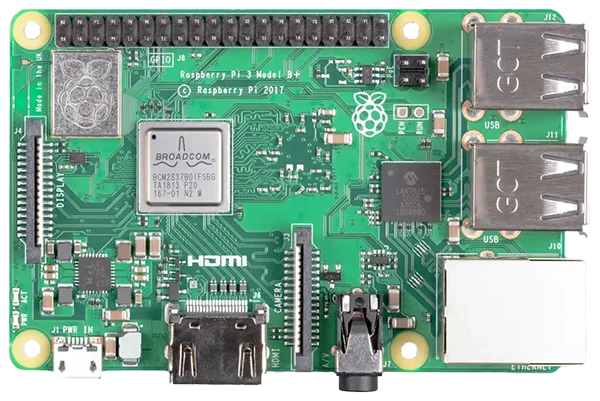The Raspberry Pi is already a classic, and the release of the Raspberry Pi 4 promises to enhance the performance of already existing applications and make the single board computer a reality.
The RPI 4 board has the same RPI form factor we’ve come to love, but there are many things that have been redesigned, making the board incompatible with previous design. As we’d expect from a new version, the device has increased the processing power compared to the Raspberry Pi 3.
Hardware

The Raspberry Pi 4 has a significant redesign with multiple
- Processor: The Pi 4 is powered by a quad-core ARM Cortex-A76 CPU initially running at 1.5GHz, but later version are clocked at 1.8 GHz
- Memory: It comes in multiple variants, 1GB, 2GB, 4GB and 8GB of LPDDR4x RAM. Update: the 1GB version has been discontinued.
- Storage: The microSD card slot is available as always, but USB booting is also possible
- Graphics: The VideoCore VI GPU supports dual 4K HDMI outputs
- Connectivity: The Pi 4 includes dual-band Wi-Fi 6 802.11ac, Bluetooth 5.0 (Classic + LE), and Gigabit Ethernet
- USB Ports: 2x USB 3.0 ports and 2x USB 2.0 Ports
- Power Input: USB-C
- GPIO: Standard 40-pin GPIO header
AS the whole industry is shifting USB-C, the new Raspberry PI changes its connector from the usual USB micro B we’ve been accustomed to a USB-C connector. The power requirements are still the same with the board needing a 15W Power supply (5V @ 3A).
A limited version of the Raspberry Pi 4 schematics are available, focusing mainly on the I/O of the system that enables improved interface with the board to design
Wireless Connectivity
The RPI 4 has an integrated Wi-Fi and Bluetooth module. The Wi-Fi supports both the 2.4GHz and 5GHz bands. Even better, the board has modular certification, which means that you can integrate the RPI 4 into a product and reuse the FCC certification without redoing all the wireless testing.
Gigabit Ethernet
Processing Power
Backwards Compatibility
Software

Great hardware is nothing without great software, and the RPI is supported by the Raspberry Pi OS by default, along with support for other Linux distros.
The good news is that the Raspberry Pi software stack is mature and working. In fact most users of RPI OS seem to prefer it compared to other alternatives, since it’s finely tuned to the RPI capabilities.
Raspberry Pi 5 support began in Raspberry Pi OS 12 with Kernel 6.1.21 but the latest RPI OS release uses Kernel 6.6.31.
Price
- 2GB – $45
- 4GB – $55
- 8GB – $75
Our Take
The Raspberry Pi 4 is a fantastic upgrade to the Raspberry Pi 3, with multiple price points depending on your needs that should fit any budget, although it won’t strictly meet the old $35 price point.

